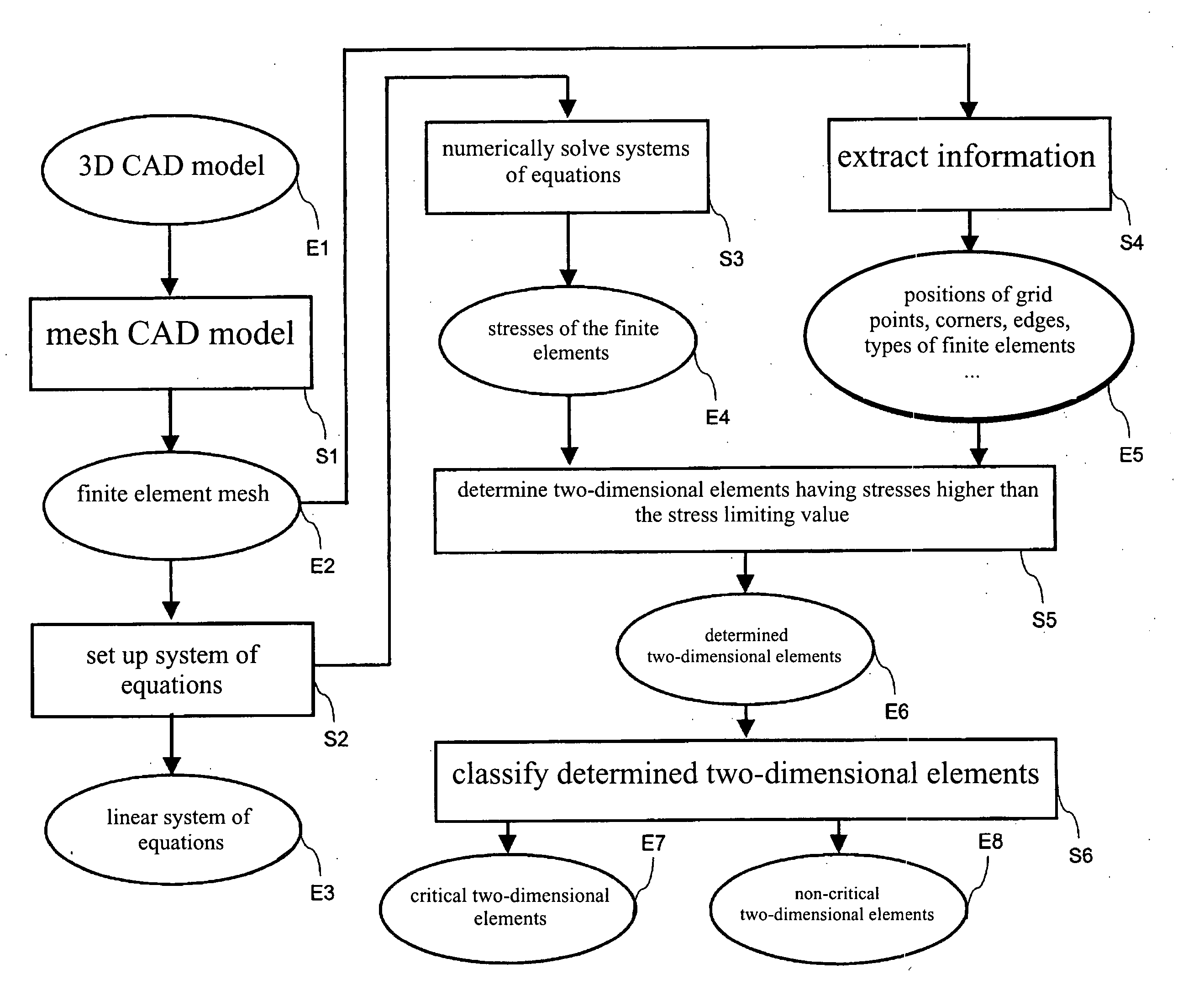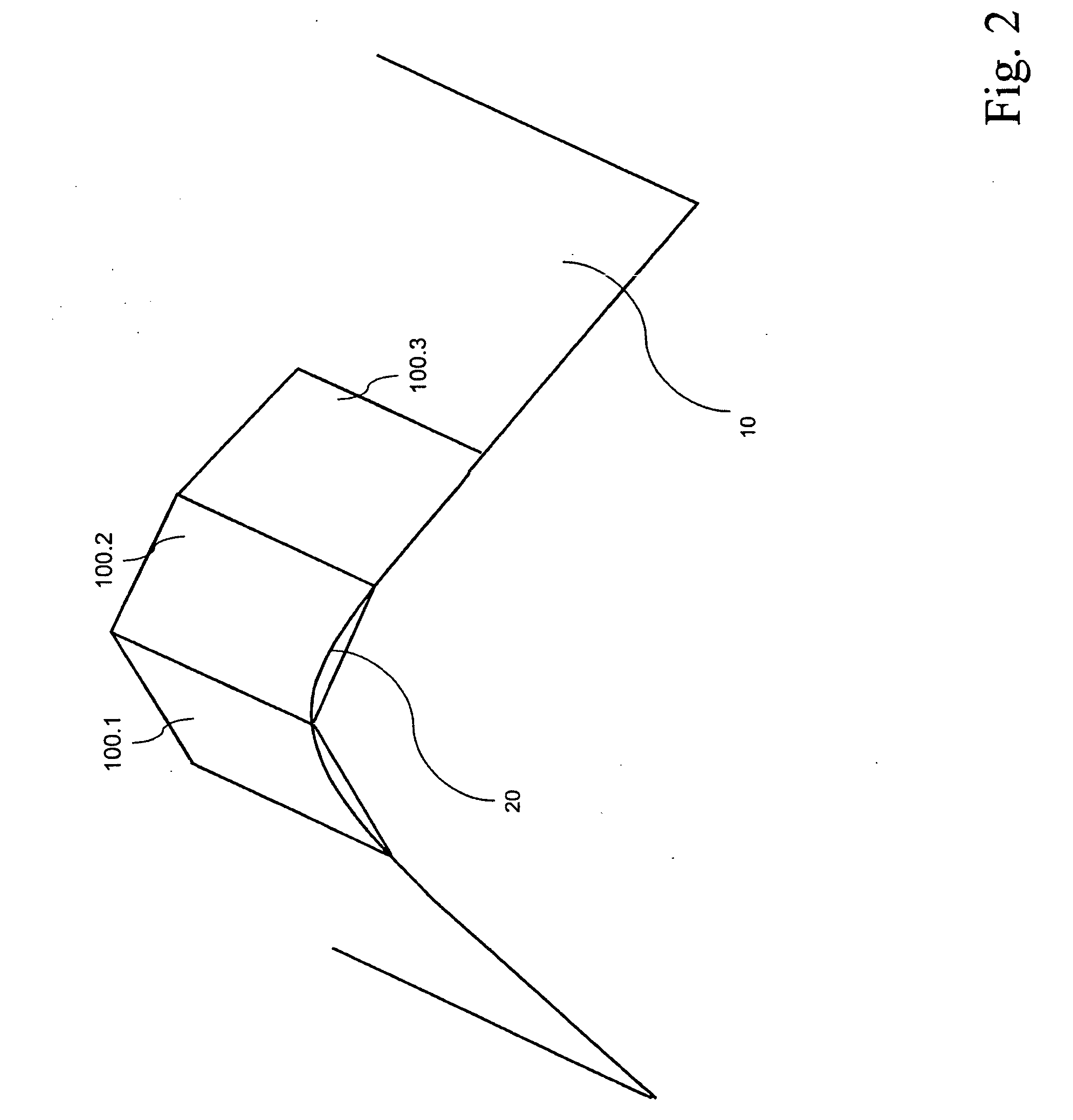Finite element simulation
a simulation and element technology, applied in the field offinite element simulation, can solve the problems of not performing stress computation for rigid object elements, exceeding predefined stress limit values, and providing no method that makes it possible, so as to improve the critical classification of finite elements
- Summary
- Abstract
- Description
- Claims
- Application Information
AI Technical Summary
Benefits of technology
Problems solved by technology
Method used
Image
Examples
Embodiment Construction
[0083] The exemplary embodiment refers to a three-dimensional CAD model of an automobile body. The CAD model functions in this example as a design model, and the body functions as an industrial system. The operational strength of a motor vehicle is predicted during product development by actual tests and also via simulations. In particular, it must be ensured that no damage such as cracks occur in the body during actual operation. Different design states are compared to one another via the tests and simulations in terms of the expected operational strength.
[0084] An electronic design model of the body or a partial system thereof to be studied, available to a computer, is generated and predefined for the method. In this example, the model has the form of a three-dimensional CAD model (result E1 in FIG. 1). It includes a plurality of component models for the body components. To generate the model, an operator preferably uses a tool for computer-aided design (CAD tool). A meshing tool...
PUM
 Login to View More
Login to View More Abstract
Description
Claims
Application Information
 Login to View More
Login to View More - R&D
- Intellectual Property
- Life Sciences
- Materials
- Tech Scout
- Unparalleled Data Quality
- Higher Quality Content
- 60% Fewer Hallucinations
Browse by: Latest US Patents, China's latest patents, Technical Efficacy Thesaurus, Application Domain, Technology Topic, Popular Technical Reports.
© 2025 PatSnap. All rights reserved.Legal|Privacy policy|Modern Slavery Act Transparency Statement|Sitemap|About US| Contact US: help@patsnap.com



